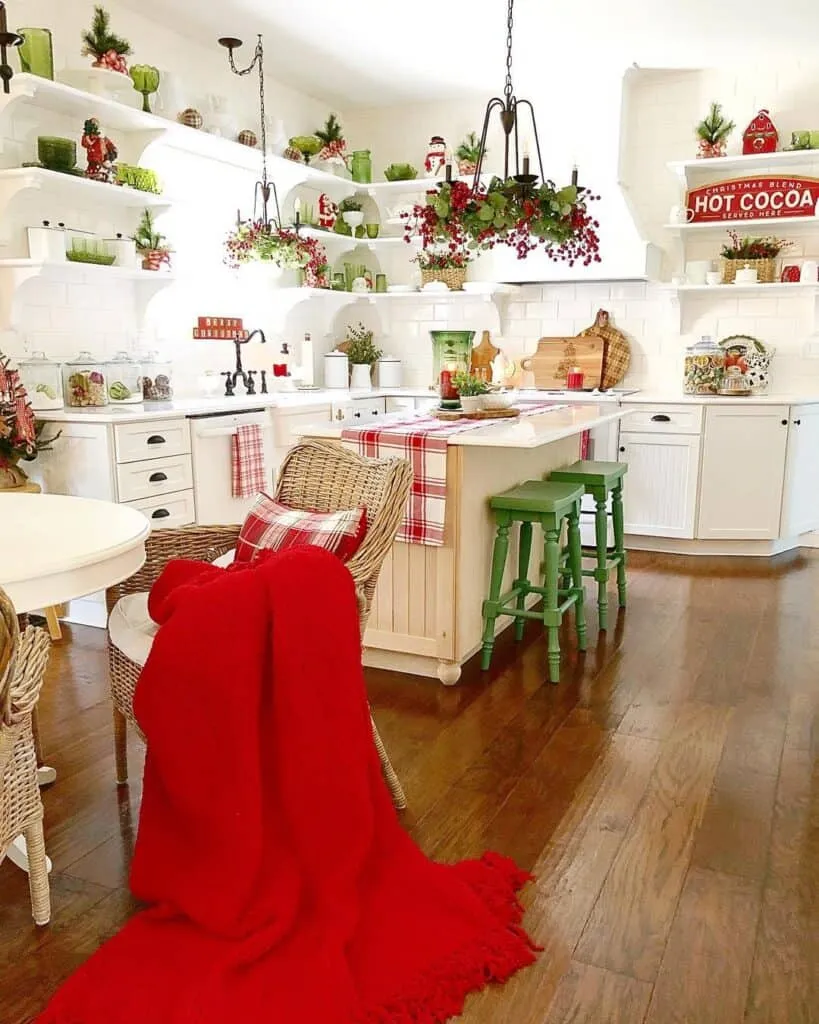Choosing the Perfect Rustic Red Kitchen Decor
Creating a rustic red kitchen involves more than just slapping a coat of red paint on the walls. It’s about evoking a sense of warmth, history, and natural beauty. This style embraces imperfections, celebrates natural materials, and creates a space that feels both inviting and functional. The key is to combine the bold statement of red with the textures and tones that define the rustic aesthetic. Consider the interplay of light and shadow, the warmth of wood, and the charm of handcrafted details. A well-designed rustic red kitchen should be a haven, a place where family and friends can gather, cook, and enjoy each other’s company. This article is your guide to achieving a stunning rustic red kitchen, one that will inspire you every day.
Understanding the Rustic Style
The rustic style, at its core, is about embracing the raw, the imperfect, and the natural. It draws inspiration from the countryside, farmhouses, and historical homes, focusing on materials that have character and tell a story. Think weathered wood, exposed brick, stone, and handmade elements. It is a style that celebrates authenticity and simplicity, avoiding the sleekness and uniformity often associated with modern design. The color palettes are typically earthy and muted, with a focus on warm tones that create a cozy atmosphere. In a rustic kitchen, functionality is paramount, with an emphasis on creating a space that is both practical and beautiful. It’s about creating a space that feels lived-in and loved, a place that welcomes you with open arms.
The Role of Color in Rustic Kitchens
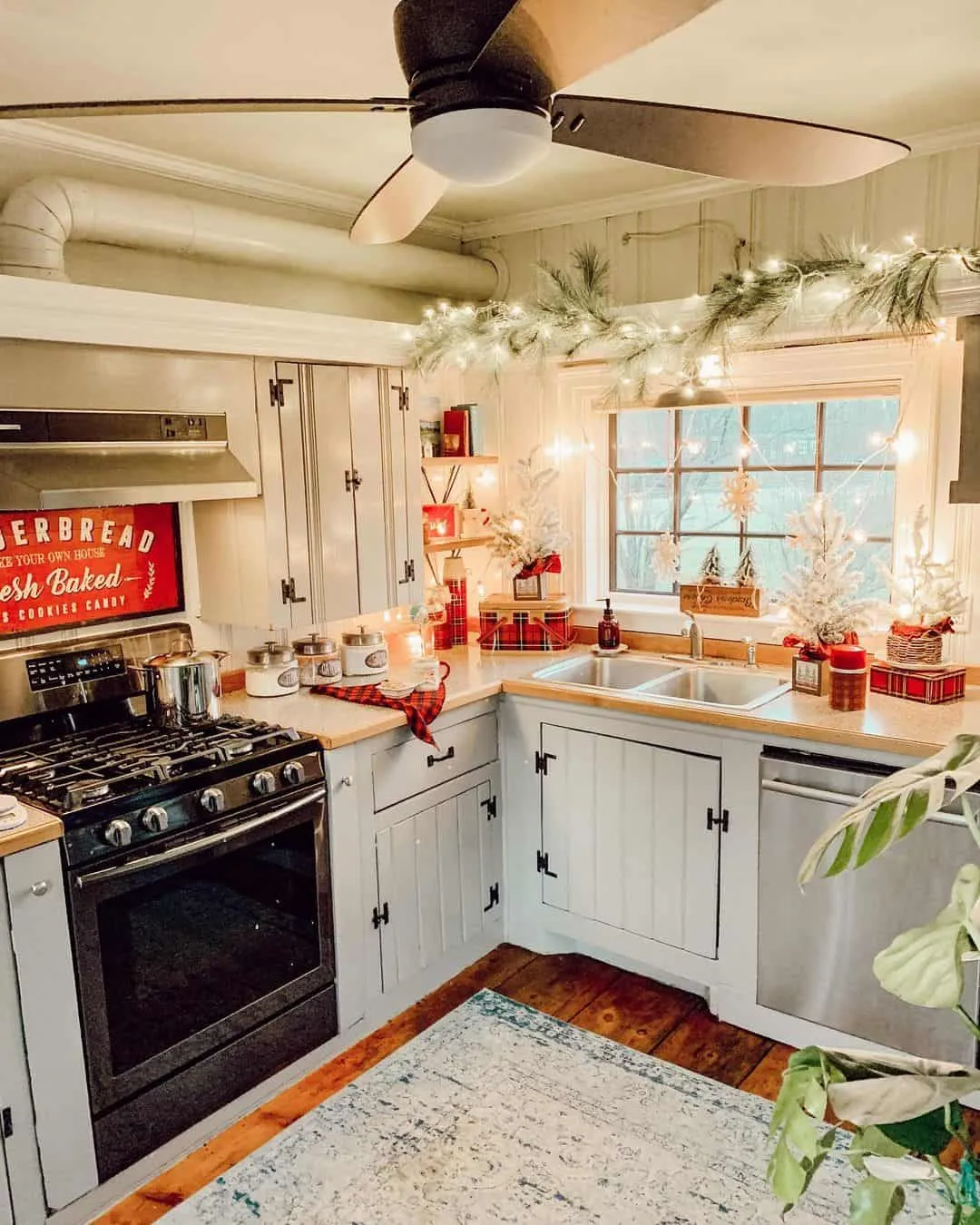
Color plays a crucial role in setting the tone of a rustic kitchen, and red, when used correctly, can create a stunning effect. While earthy tones like browns, creams, and greens are commonly associated with rustic design, red adds a vibrant element of warmth and personality. The key is to choose the right shade of red; think muted, brick-reds, or deep, earthy tones that complement the natural materials of the kitchen. These reds can be used on cabinets, walls, or as accents. However, it’s important to balance the red with neutral colors and textures to prevent the space from feeling overwhelming. The right combination of colors can enhance the rustic character, making the kitchen feel inviting, warm, and full of life. A well-chosen color palette is a foundation for creating the perfect rustic kitchen.
Top 5 Rustic Red Kitchen Decor Tips
Tip 1 Choose the Right Red Shade
The shade of red you choose is paramount to the success of your rustic kitchen design. Avoid bright, fire-engine reds, which can clash with the natural elements of the style. Instead, opt for muted, earthy reds that evoke warmth and depth. Consider shades like barn red, brick red, or a deep terracotta. These colors have undertones that blend beautifully with wood, stone, and other natural materials. Before committing to a color, test it in your kitchen to see how it looks in different lighting conditions. The right red shade will serve as the perfect foundation, adding character and charm without overpowering the space. Proper research is crucial to ensuring the colors you use are fitting.
Finding the Perfect Red for Your Kitchen
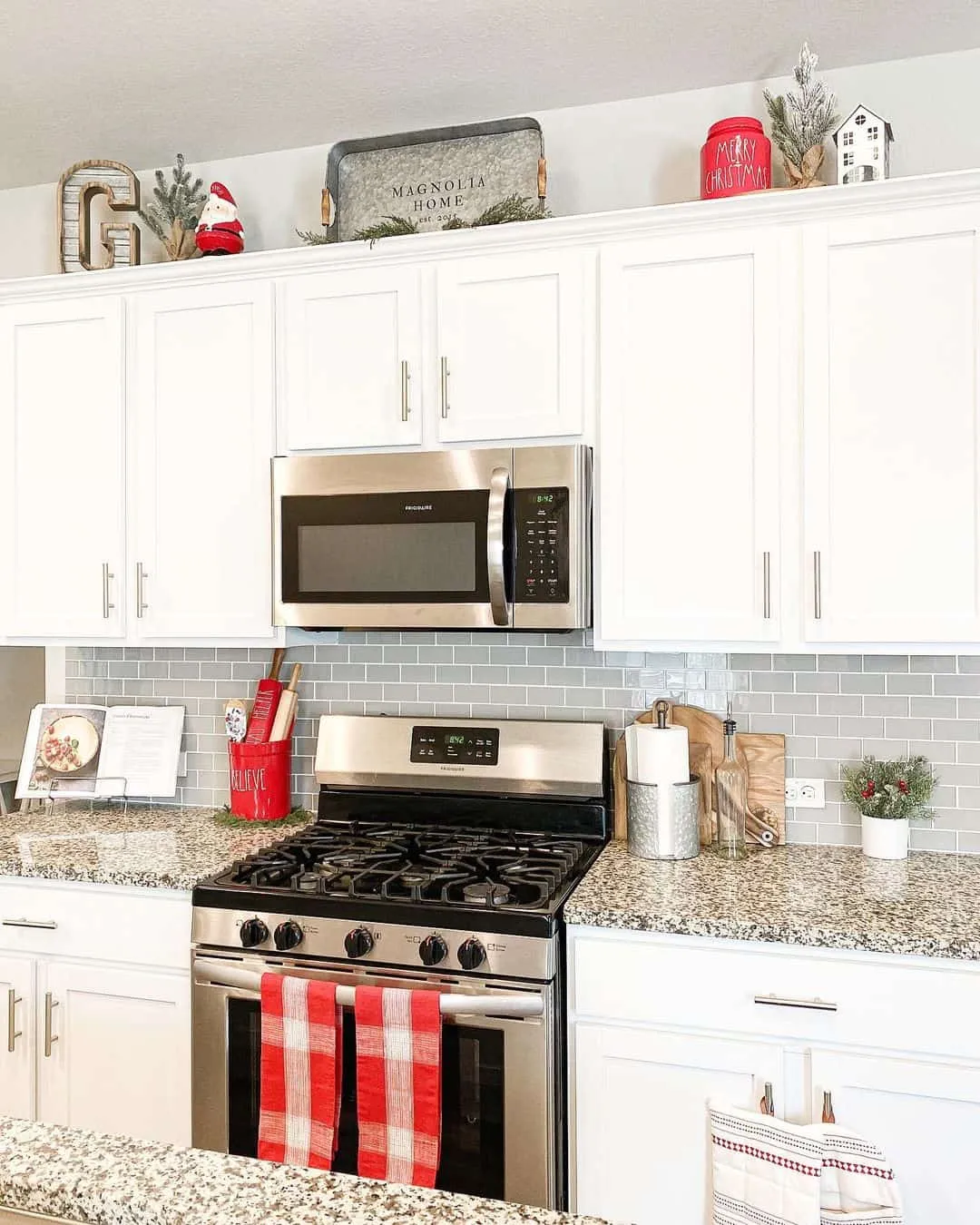
Finding the perfect red shade often involves a process of experimentation and consideration. Visit your local paint store and collect paint samples in various red tones. Bring these samples back to your kitchen and observe how they look at different times of day. Pay attention to the undertones of each red; some may have orange, brown, or even pink hues. These undertones will significantly impact the overall feel of your kitchen. Consider the amount of natural light your kitchen receives. If your kitchen is naturally dark, choose a brighter red to help brighten the space. In a kitchen with plenty of sunlight, you can opt for a deeper, richer red. Remember, the perfect red will complement your existing decor and create a harmonious space.
Tip 2 Incorporate Natural Materials
Embrace natural materials to create an authentic rustic kitchen. Wood is essential; consider wooden cabinets, exposed beams, or a butcher-block countertop. The texture of the wood adds warmth and character. Stone or brick can also be incorporated to enhance the rustic feel; think a stone backsplash or a brick accent wall. These materials bring a sense of history and durability. In addition to these, consider natural textiles like linen and cotton for curtains and dish towels. The goal is to create a space that feels connected to the earth, with materials that age gracefully and tell a story. Proper use of these materials will contribute to achieving a rustic aesthetic.
Wooden Elements in Rustic Kitchens
Wooden elements are the heart of any rustic kitchen. From the cabinets to the flooring, wood brings warmth, texture, and character. Consider using reclaimed wood for cabinets or open shelving to add a touch of history. The imperfections and knots in the wood are part of its charm. Alternatively, you could opt for new wood with a distressed finish to achieve a similar effect. Wooden countertops, particularly butcher block, are a classic choice, providing a warm and inviting surface. If you’re looking for a more dramatic effect, exposed wooden beams can add architectural interest and further emphasize the rustic aesthetic. Remember, the goal is to celebrate the natural beauty of wood.
Stone and Brick Features
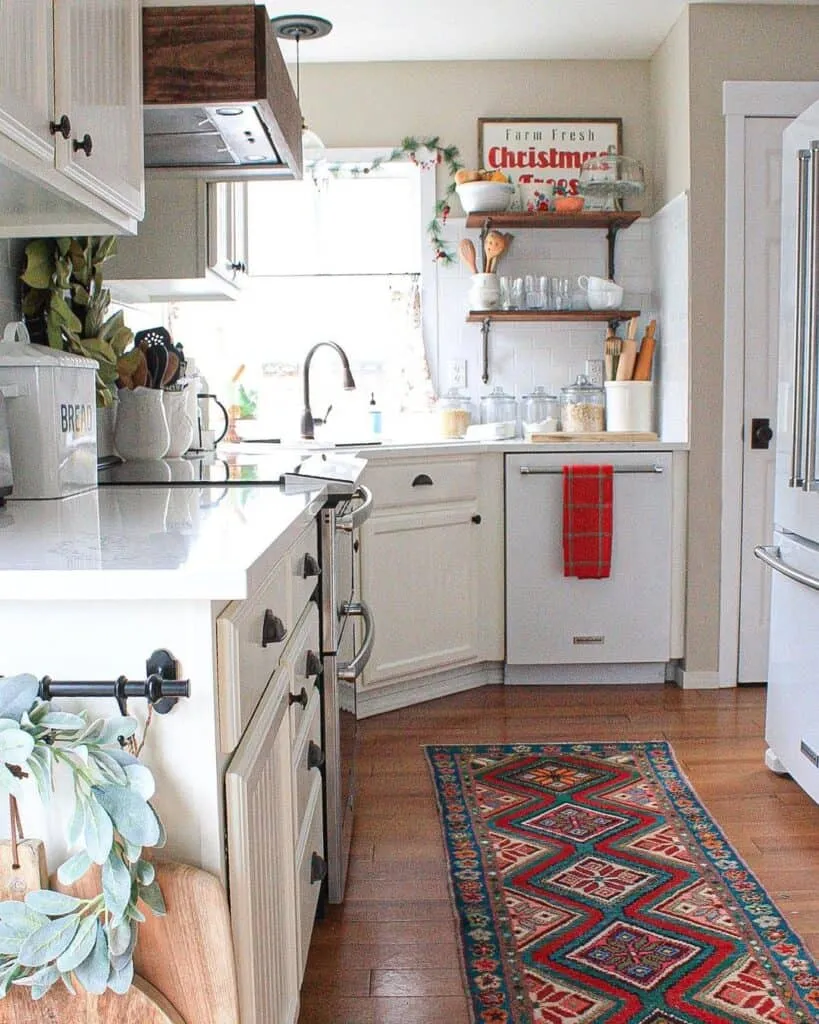
Stone and brick features add a touch of history and natural beauty. A stone backsplash can create a focal point while protecting your walls. Exposed brick walls or accents offer a unique texture and visual interest, adding to the kitchen’s rustic appeal. Consider using stone for your flooring, or incorporate stone elements into your countertops. The rough, irregular surfaces of stone and brick create a sense of authenticity and connection to nature. Using these elements will immediately enhance the rustic character of your kitchen. The use of these materials adds depth and a sense of grounding to the space, creating a visually stunning and comfortable environment.
Tip 3 Accessorize with Purpose
Accessories are essential for adding character and personality to your rustic red kitchen. Choose items that reflect your personal style and complement the overall aesthetic. Consider vintage or antique pieces that bring a sense of history and charm. Display handcrafted pottery, vintage canisters, or antique kitchen tools. Lighting is also crucial, with options like wrought iron chandeliers or pendant lights that create a warm and inviting atmosphere. Don’t be afraid to incorporate textured elements like woven baskets, wooden bowls, or antique signs. Choose items that serve a purpose, creating a functional and aesthetically pleasing space. The right accessories will bring the whole kitchen together.
Selecting Decorative Items
When selecting decorative items, aim for pieces that tell a story or reflect your personal interests. Vintage items are excellent choices; they bring history and character to the space. Consider displaying antique kitchen scales, old mixing bowls, or vintage cookbooks. Handcrafted pottery and ceramics add warmth and texture. Choose items with natural textures and materials, like wood, metal, and woven fabrics. Accessories should complement your red color scheme, working to balance the space with other hues and tones. Avoid clutter by choosing items that are both beautiful and functional. The goal is to create a space that feels lived-in and loved, reflecting your personality and style.
Lighting and Hardware
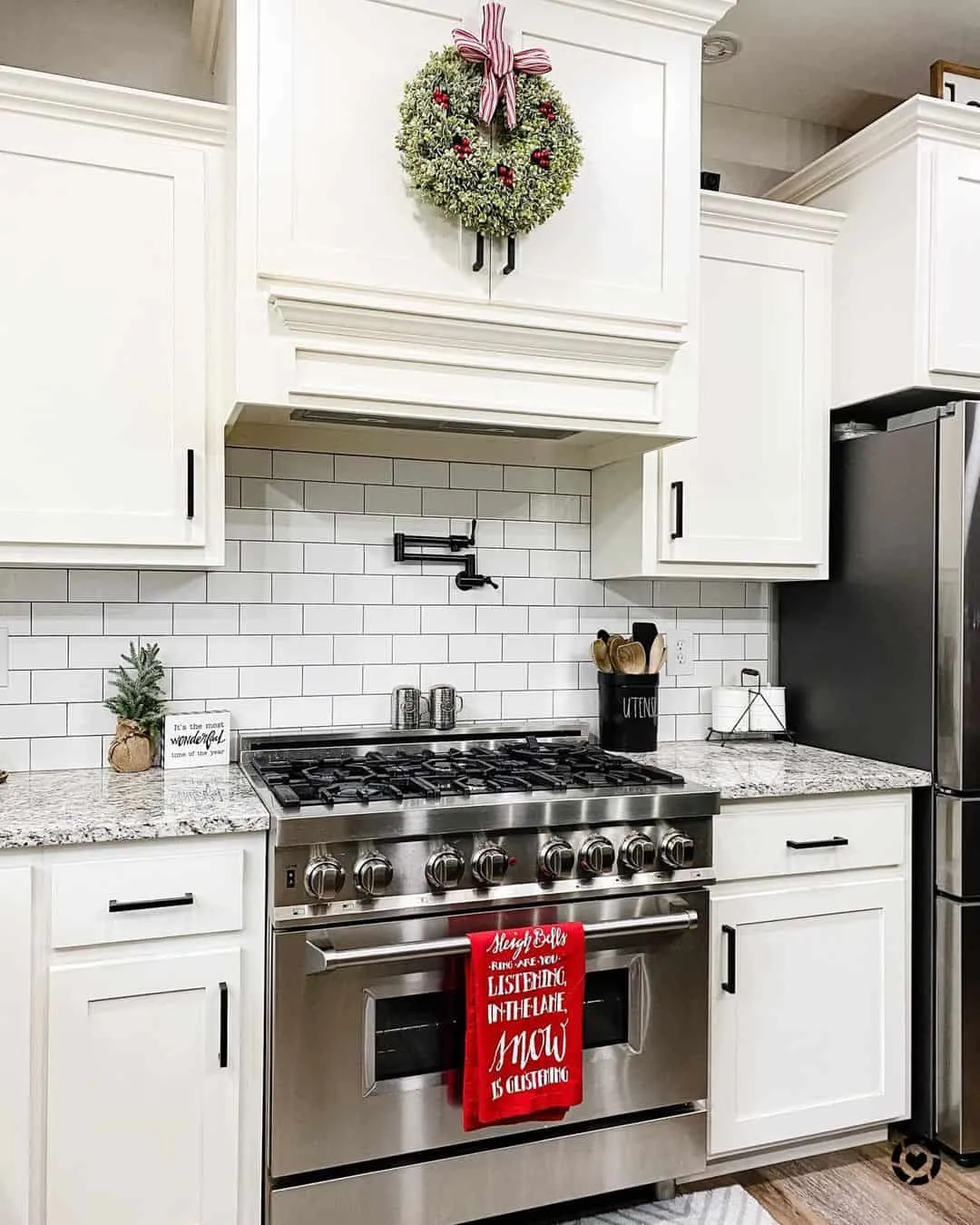
Lighting and hardware are the finishing touches that can make or break the overall look. Opt for warm, inviting lighting fixtures that complement the rustic aesthetic. Wrought iron chandeliers, pendant lights with exposed bulbs, or vintage-style sconces can create a warm and inviting atmosphere. The hardware you choose can also play a significant role; consider cabinet pulls and knobs in antique brass, oil-rubbed bronze, or wrought iron. These details can add an element of history and charm to your kitchen. Choose hardware that is both stylish and functional. The right lighting and hardware can create a space that feels welcoming and complete.
Tip 4 Balance the Red with Neutrals
While red is a bold choice, it’s essential to balance it with neutral colors to create a harmonious and visually appealing space. Neutral colors provide a calming backdrop and prevent the red from overwhelming the kitchen. Consider using white, cream, beige, or gray for your walls, cabinets, or countertops. These colors will complement the red and enhance the rustic feel. You can also introduce neutral colors through accessories like dish towels, curtains, and rugs. Balance is key; use the red as an accent color while maintaining a neutral foundation. This will help create a space that is both warm and inviting without being too overwhelming. The right balance will create a stunning, welcoming space.
Neutral Color Palettes
Neutral color palettes are the foundation of a well-balanced rustic red kitchen. Whites, creams, and beiges offer a clean, fresh backdrop that complements the warmth of red. These colors can be used on walls, cabinets, and countertops. Soft grays can also work, adding a touch of sophistication and depth. For instance, consider painting your walls a soft white or cream and using a brick-red color for your cabinets. Introduce neutral colors through accessories such as dish towels, curtains, and rugs. Remember, the goal is to create a balanced space, with the red serving as a focal point, and the neutrals providing a calming, cohesive environment. The use of neutral colors will enhance the rustic style.
Using White and Cream
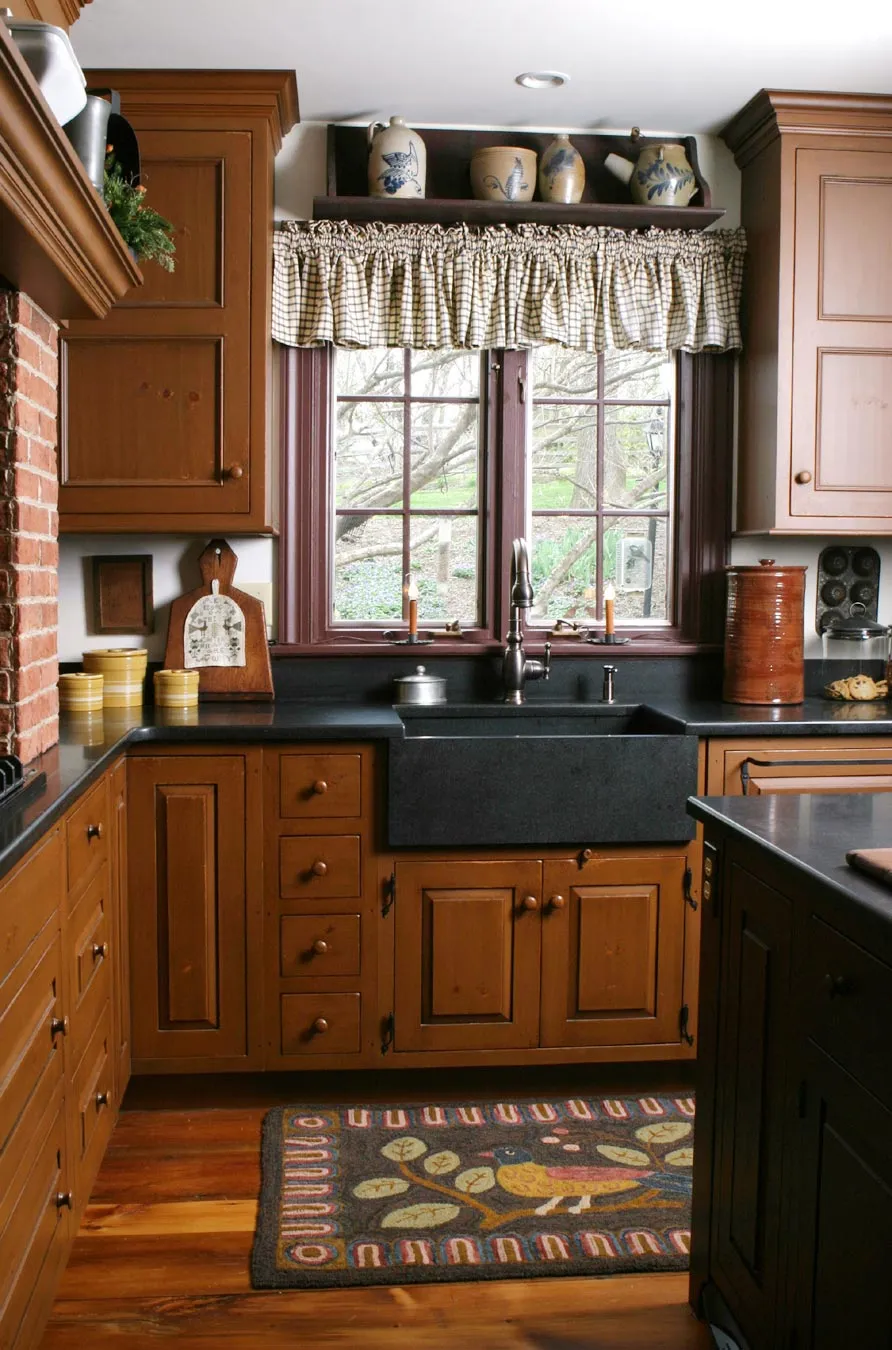
White and cream are classic choices for creating a light and airy feel in a rustic kitchen. White can brighten the space and make it feel larger, while cream offers a slightly warmer alternative. Both colors pair beautifully with red, creating a visually appealing contrast. Consider painting your cabinets white or cream and using red as an accent color on a backsplash or a feature wall. Use white or cream countertops and introduce pops of red through accessories. These light colors will help balance the boldness of the red and enhance the rustic character of the space. The result is a kitchen that is both stylish and welcoming.
Tip 5 Add Personal Touches
The final touch to any rustic red kitchen is to add personal touches that reflect your style and make the space feel like home. This is your chance to showcase your personality and create a space that is truly unique. Display collectibles that hold sentimental value, such as vintage kitchen tools or family heirlooms. Incorporate artwork that reflects your interests, like paintings or prints with rustic themes. Include personal photographs or mementos that remind you of loved ones. The right personal touches will create a space that is warm, inviting, and uniquely yours. The goal is to create a space that is both functional and emotionally resonant.
Displaying Collectibles and Artwork
Displaying collectibles and artwork adds personality and character to your kitchen. Choose items that reflect your interests and bring a sense of history and charm. Display vintage kitchen tools, antique pottery, or family heirlooms to add personal touches. Consider artwork with rustic themes, such as landscapes, still lifes, or vintage-style prints. Hang artwork in a way that creates a focal point, like above your stove or sink. Arrange collectibles on open shelving, countertops, or a kitchen island. Ensure your choices complement the overall aesthetic and create a space that feels lived-in and loved. The goal is to infuse your kitchen with your unique personality.
Creating a Welcoming Atmosphere
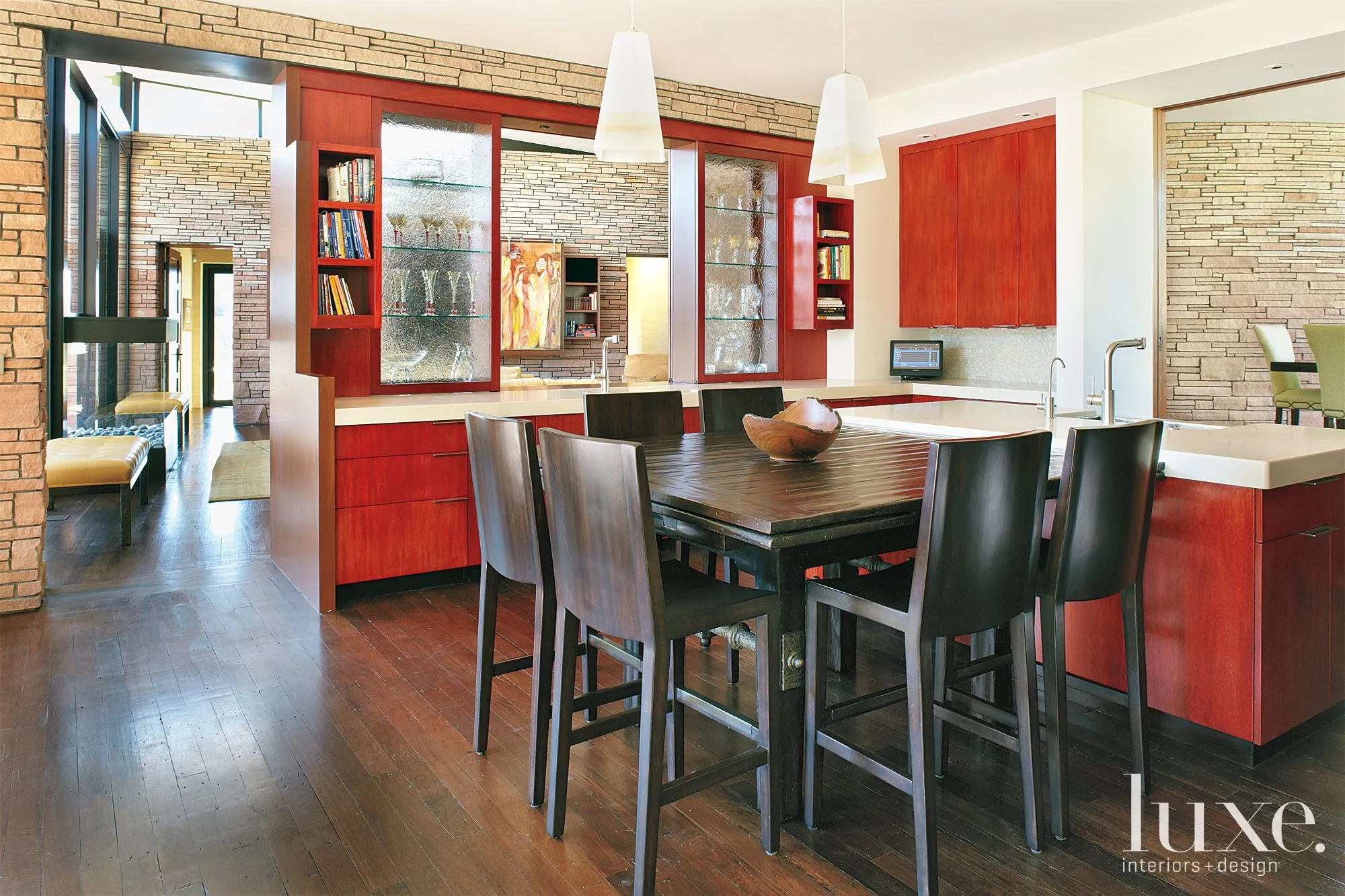
Creating a welcoming atmosphere in your rustic red kitchen is about more than just the decor; it’s about the overall feeling of the space. Ensure there is ample lighting, both natural and artificial, to create a warm and inviting ambiance. Add comfortable seating options, such as a cozy breakfast nook or a kitchen island with bar stools. Use soft textiles, such as linen curtains or cotton dish towels, to add warmth and texture. The goal is to create a space where family and friends can gather, cook, and enjoy each other’s company. A kitchen is the heart of the home. It is a space where memories are made. By carefully selecting the right decor and adding personal touches, you can create a truly inviting and welcoming space.
